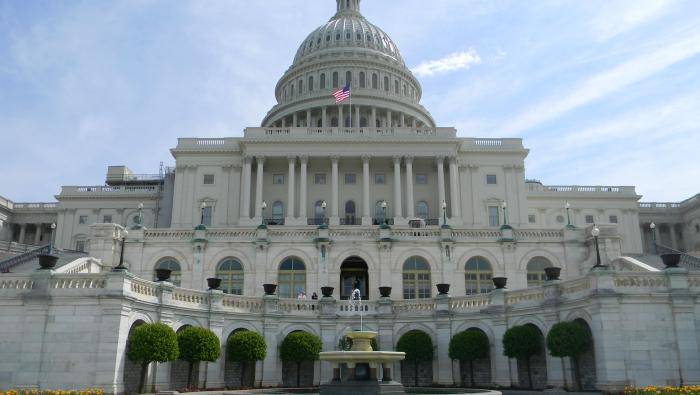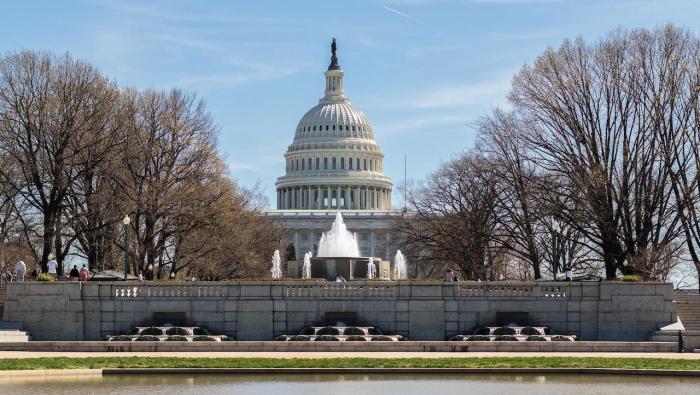Ten days before the January 20 Presidential inauguration, the FAA issued a six-page national security flight advisory describing airspace restrictions surrounding the event. Besides spelling out the areas of the Washington air defense identification zone (ADIZ) and the Washington flight- restricted zone within it, and associated altitude and traffic restrictions and other security procedures, the advisory also included a section on “additional measures taken.”
Among a number of items in that section, the advisory stated that 12 law-enforcement aircraft would be on patrol over D.C., all carrying new ADS-B systems “to stop false intruder targets on radar scopes” and added that the “TSA has requested $20.8 million to outfit approximately 2,800 registered general aviation aircraft permanently based within the DCA ADIZ.”
This was intriguing news, implying that the TSA wanted approximately 2,800 aircraft to be equipped with ADS-B before the inauguration and was prepared to pay for it. It certainly looked like an attractive idea. After all, the FAA had already set a precedent by providing free ADS-B equipment to Capstone participants in Alaska.
On the other hand, are there really 2,800 general aviation aircraft based permanently within the DCA ADIZ? (AOPA quoted the same 2,800 and told AIN it got the number from the FAA.) Local pilots suggested to AIN that the number would likely be closer to 800 than 2,800. And in any event, getting the TSA’s budget request approved and installing ADS-B in even eight, let alone 800, aircraft within the 10-day time frame would have been a mighty challenge.
ADS-B for General Aviation
Nevertheless, $20.8 million was a fairly precise figure, indicating that someone, somewhere, had done some healthy number-crunching to derive it. FAA officials declined to comment and suggested AIN contact the TSA, which suggested that AIN contact the Department of Homeland Security. At Homeland Security, a Secret Service agent aTen days before the January 20 Presidential inauguration, the FAA issued a six-page national security flight advisory describing airspace restrictions surrounding the event. Besides spelling out the areas of the Washington air defense identification zone (ADIZ) and the Washington flight- restricted zone within it, and associated altitude and traffic restrictions and other security procedures, the advisory also included a section on “additional measures taken.”
Among a number of items in that section, the advisory stated that 12 law-enforcement aircraft would be on patrol over D.C., all carrying new ADS-B systems “to stop false intruder targets on radar scopes” and added that the “TSA has requested $20.8 million to outfit approximately 2,800 registered general aviation aircraft permanently based within the DCA ADIZ.”
This was intriguing news, implying that the TSA wanted approximately 2,800 aircraft to be equipped with ADS-B before the inauguration and was prepared to pay for it. It certainly looked like an attractive idea. After all, the FAA had already set a precedent by providing free ADS-B equipment to Capstone participants in Alaska.
On the other hand, are there really 2,800 general aviation aircraft based permanently within the DCA ADIZ? (AOPA quoted the same 2,800 and told AIN it got the number from the FAA.) Local pilots suggested to AIN that the number would likely be closer to 800 than 2,800. And in any event, getting the TSA’s budget request approved and installing ADS-B in even eight, let alone 800, aircraft within the 10-day time frame would have been a mighty challenge.
ADS-B for General Aviation
Nevertheless, $20.8 million was a fairly precise figure, indicating that someone, somewhere, had done some healthy number-crunching to derive it. FAA officials declined to comment and suggested AIN contact the TSA, which suggested that AIN contact the Department of Homeland Security. At Homeland Security, a Secret Service agent advised calling the FAA.
A second call to the TSA was slightly more fruitful, with a spokesperson commenting only that the statement attributed to the TSA should not have appeared in the FAA’s flight advisory. The FAA withdrew the advisory one day after its publication.
Was this some sort of ADS-B cover-up? Possibly, although ADS-B bungle also came to mind. Further inquiries revealed that the FAA advisory was originally intended to be a two-page document but the agency added an extra four pages of background detail, including the information about the 12 patrolling aircraft and the TSA’s plan. Four days after it withdrew the advisory, the FAA again posted the advisory, slimmed down to its original two pages, on its Web site.
A third call to the TSA drew the response that “we have no current plans to put equipment in private aircraft,” while sources at the FAA continued to have no comment, although one official conceded that several months ago the TSA had inquired about methods to track general aviation aircraft that could “fly under the radar.” But the source of the $20.8 million and the 2,800-aircraft figure remains a mystery.
The inauguration went off smoothly, of course, with no “false intruders” spotted by the ADS-B units in the patrol aircraft. oꆱdvised calling the FAA.
A second call to the TSA was slightly more fruitful, with a spokesperson commenting only that the statement attributed to the TSA should not have appeared in the FAA’s flight advisory. The FAA withdrew the advisory one day after its publication.
Was this some sort of ADS-B cover-up? Possibly, although ADS-B bungle also came to mind. Further inquiries revealed that the FAA advisory was originally intended to be a two-page document but the agency added an extra four pages of background detail, including the information about the 12 patrolling aircraft and the TSA’s plan. Four days after it withdrew the advisory, the FAA again posted the advisory, slimmed down to its original two pages, on its Web site.
A third call to the TSA drew the response that “we have no current plans to put equipment in private aircraft,” while sources at the FAA continued to have no comment, although one official conceded that several months ago the TSA had inquired about methods to track general aviation aircraft that could “fly under the radar.” But the source of the $20.8 million and the 2,800-aircraft figure remains a mystery.
The inauguration went off smoothly, of course, with no “false intruders” spotted by the ADS-B units in the patrol aircraft.






